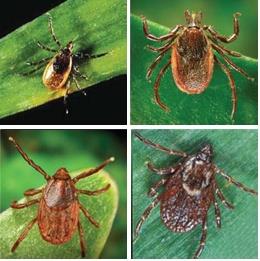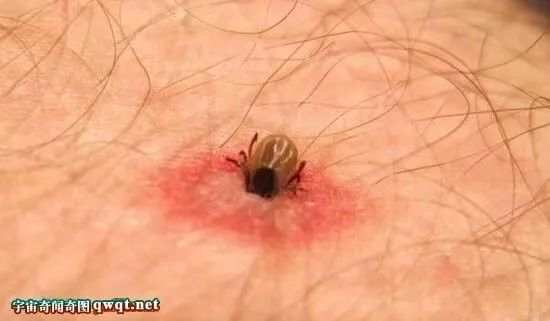Spread quickly! Shaoxing CDC issued an important reminder
Yesterday, Shaoxing CDC issued a reminder:
Tips
"Fever companion" has entered the high-incidence season.
April-October is the high season of fever with thrombocytopenia syndrome (hereinafter referred to as fever companion), and fever companion cases have appeared in some areas of our city this year.
City CDC special reminder:
When playing and working outdoors, you should be alert to being bitten by ticks lurking in grass, tea gardens and bushes!
Because small ticks can spread many diseases, and fever companion is one of them.

01
Tick bites spread fever companion
The disease is mainly transmitted by tick bites.
-When a tick carrying a pathogen bites a person, the pathogen enters the human body and causes the disease.
-direct contact with blood, bloody secretions and other body fluids of critically ill patients may also lead to transmission.
02
High fever after biting, beware of fever companion
● People bitten by ticks will have an incubation period of 1 to 2 weeks before onset.
● After that, you may have an acute onset, the main clinical manifestations are fever, and the body temperature is above 38℃. In severe cases, you may have persistent high fever, which can reach above 40℃, accompanied by fatigue, obvious anorexia, nausea, vomiting, etc. Some cases have headaches, muscle aches, diarrhea, etc.
● The vast majority of patients have a good prognosis, and a few cases are in critical condition, which may cause disturbance of consciousness, skin ecchymosis, gastrointestinal bleeding, pulmonary bleeding, etc., and even die of multiple organ failure such as shock, respiratory failure and disseminated intravascular coagulation (DIC).
03
Correctly take out ticks when bitten by ticks.
● Ticks are mostly found in mountainous areas and hilly areas. Once bitten by ticks in the wild environment, you can apply alcohol on ticks to relax their heads and then take them out with pointed tweezers.
● Or, lightly scald the exposed part of ticks with cigarette butts and incense heads to make their heads withdraw. Never drag and pat hard, or the head of the tick will break in the skin and may cause infection.
● Do local disinfection with iodine or alcohol, and closely observe the physical condition.
● If there are symptoms such as fever, inflammation and erythema at the bite site, you should see a doctor in time to avoid missing the best treatment opportunity.

04
To prevent small "fever companions", we must do the following:
Avoid and prevent being bitten by ticks and reduce the risk of infection!
Outdoor travel notes:
★ When working outdoors and traveling up the mountain, you should try to avoid sitting and lying in the main habitat environment of ticks for a long time.
★ Especially when going to outdoor activities, you must do personal protection, wear long-sleeved clothes, tie your trouser legs or stuff them into socks or shoes. It is best not to wear sandals.
★ Wear light-colored clothes to find out whether ticks are attached, and the surface of knitted clothes should be as smooth as possible, so that ticks are not easy to adhere.
Attention to home life:
★ Residents living in mountainous and hilly areas should also pay attention to the cleaning and killing of free ticks in the home environment and ticks attached to domestic animals.
Seek medical attention in time and take the initiative to inform:
★ Citizens with a history of tick bites or outdoor activities should go to regular medical institutions for medical treatment as soon as possible in case of suspected symptoms or signs such as fever!
★ During the visit, you should take the initiative to inform the doctor that you have a history of outdoor activities or tick bites. Especially if you have such patients at home, you must not directly contact the patients or bloody secretions to prevent infection.

Don’t panic if you touch or get bitten by ticks in your daily life!
Please accept this strategy:
1. Ticks are often attached to the scalp, waist, armpit, groin and ankle of human body. Once a tick is found to have bitten and drilled into the skin, it can be coated with alcohol to make the tick’s head relax or die, and then take out the tick with pointed tweezers, or gently scald the exposed part of the tick with cigarette butts and incense heads, so that its head can slowly withdraw. Pay attention to safety when scalding ticks Don’t pull hard to avoid hurting the skin, or leave the head of the tick in the skin.
After taking it out, use iodine or alcohol for local disinfection.
Observe your physical condition at any time. If you have symptoms such as fever, inflammation and erythema at the bite site, you should see a doctor in time to diagnose whether you have tick-borne diseases and avoid missing the best treatment opportunity.
Even if no tick bites are found, people who travel back from epidemic areas should observe their physical condition at any time, and be alert to tick-borne diseases in epidemic areas if they have symptoms such as fever.
2. When ticks are found, whether they are on the human or animal body surface, or floating on the wall or ground, do not touch them directly or even crush them, but use tweezers or other tools to catch them and burn them; If the skin touches ticks carelessly, especially the effluent after ticks are crushed, it should be disinfected.
3. Those who have a history of tick bites or field activities should seek medical treatment as soon as possible in case of suspected symptoms or signs such as fever, and inform the doctor of the relevant exposure history.